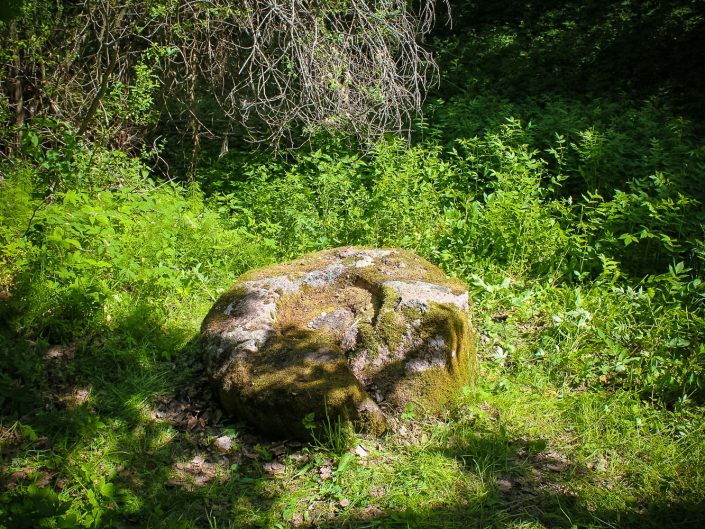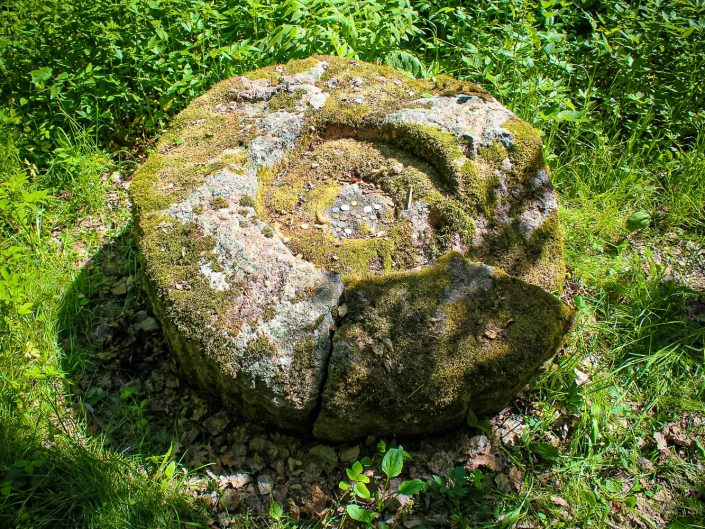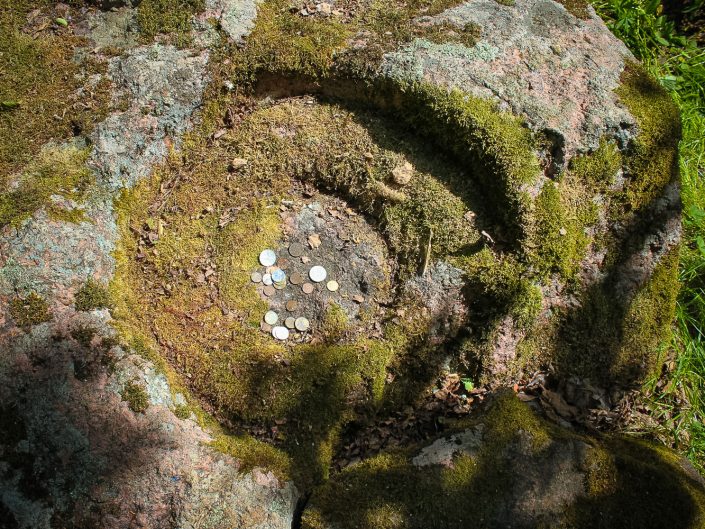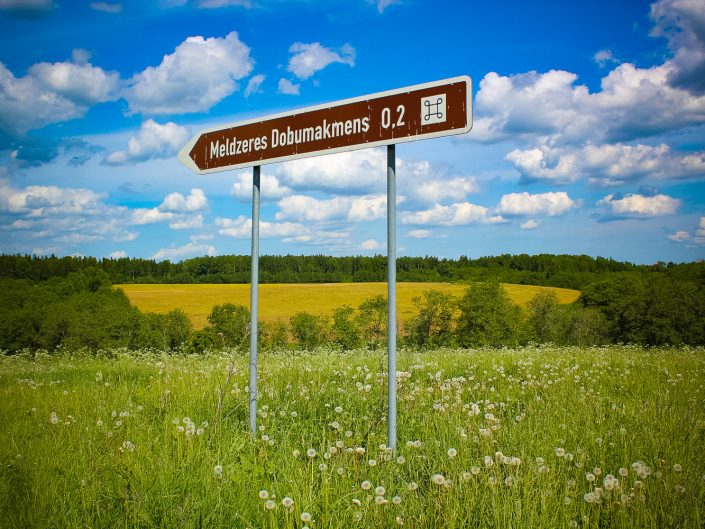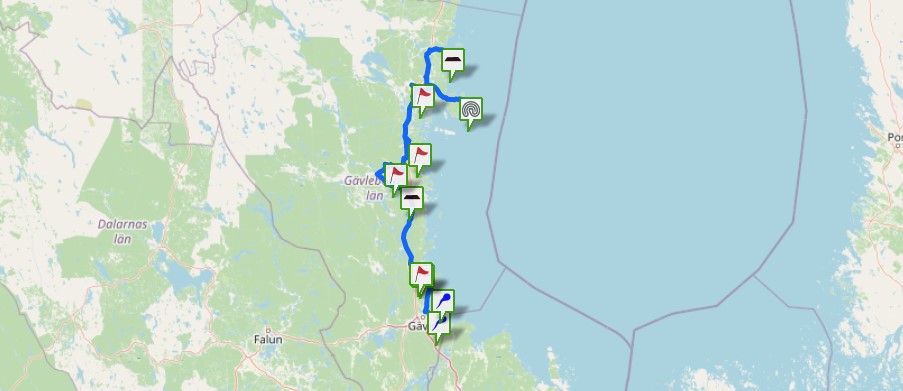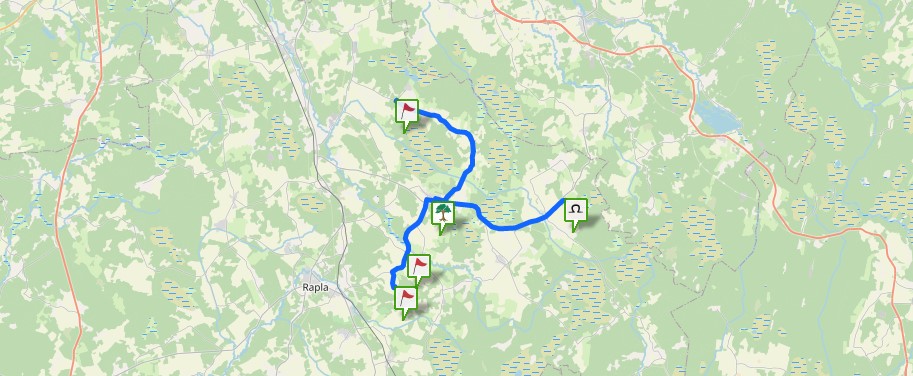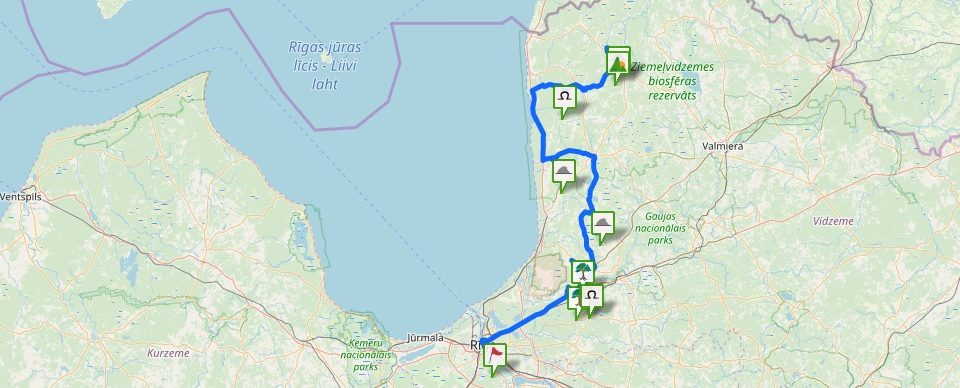By its type the hollow stone is a bowl-shaped stone. On the top of the coarsely cut bowl-shaped rapakivi granite block there is a cylinder-shape hollow, the diameter of which is 55–56cm, its depth is 6–15 cm. In the bottom of the hollow there is a groove — 0.5–3.2 cm deep and around 1.5 cm wide. The width of the groove in the second, internal, circle is 1.4–3.2 cm, depth 0.1–2.7 cm. The very stone the height of which is 0.75 m above the ground is of a cylinder shape, 1.35 m in a diameter, the sides have been carved with a metal tool. Supposedly, it was carved and used in the 15–18th centuries. The side grooves typical for the bowl-shaped stones are of various length, 17–53 cm long. The width of the grooves is from 3.5 to 5.5 cm, depth 0.9 to 1.5 cm, in several eroded places they are up to 2–3 cm deep. The surface of the hollow stone has been partly levelled off and partly remained naturally even. It can be assumed that just a slight levelling has taken place. The stone could not have been used for grinding grain, as it is sometimes believed regarding the hollow stones because the bowl is certainly not suitable for that, neither can it be so due to the location of the stone in a ravine. There are data that the stone had once been located somewhere higher, in a field, and then rolled into the ravine, however, many signs indicate that the stone lies in its original place. It has sunk into the ground. The stone is too heavy for somebody to be able to easily roll it from one place to another. If it had been rolled into the ravine it would not be lying in such a good location. Moreover, the different heights of the side grooves above the ground level indicate that this is the original location of the stone. A fragment has been split off the bowl-shaped stone on its SW side and lies next to the stone. Another split-off fragment has disappeared.
Legends herald that not far from the cult stone where there is a field now sacred oaks used to grow. In the once ameliorated surroundings of the stone there was Upespūteļi homestead. The first data about the stone with a bowl-shaped hollow were provided by Jankevics, E. Didrihsons, J. Siatkovskis in 1984, it was first described by J. Urtāns in 1985.
